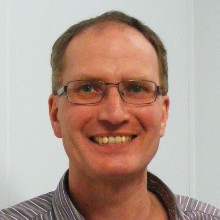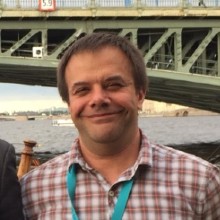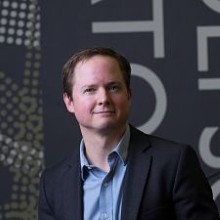Fluidics
Fluidics
Professors
Prof Alastair Hibbins

Controlling flow with metamaterials and metasurfaces
We are interested in linking together acoustic metamaterials with fluid flow, providing new avenues for the control of flow noise, harvesting ambient energy, and the shielding of surface mounted instrumentation. e.g. the use of patterned or perforated windows, pipes or exhausts that allow air flow but block noise, have great application potential.
We have a number of ongoing projects to exploit this potential, exploring the fundamental physical mechanisms that come into play when metasurfaces, metamaterials, and driven mechanical elements are used within fluids. These include using patterned metasurfaces or elastic resonators to reduce drag, harvest energy, or delay the onset of turbulence.
Prof Geoff Nash

Optical and Acoustic Materials and Devices
We explore the fascinating characteristics of new materials including 2D materials; for example, graphene and metasurfaces. We both investigate fundamental phenomena, such as the interaction of light with molecules, and aim to exploit these phenomena to create novel technology.
Prof Feodor Ogrin

Bio-inspired magnetic systems
We use magnetic materials to help us creating microscopic machines that would be able to mimic micro-organisms. As well as building and controlling them the main challenge of the research is to find the ways to recreate the mechanics of the biological systems in the highly viscous environment which they are exposed to. Our research is highly interdisciplinary, and as well as the magnetic phenomena, includes such disciplines as hydrodynamics, microfluidics, mechanics, and electromagnetism.
Prof Frank Vollmer

Single-Molecule Biosensors
Sensor systems have emerged that exhibit extraordinary sensitivity for detecting physical, chemical, and biological entities at the micro/nanoscale. Particularly exciting is the detection and analysis of molecules on miniature devices that have many possible applications in health, environment, analysis, and security.
Living Systems Institute (LSI): Vollmer Laboratory of Nano and Quantum Biosensing
Senior Lecturers / Senior Research Fellows
Dr Stefano Pagliara
Membrane transport in antibiotic resistance
Bacteria exchange molecules with their environment taking up molecules essential for subsistence while excluding poisonous molecules such as antibiotics. They do so by using proteins that form physical pathways for molecular transport across membranes, these pathways being at the basis of antibiotic resistance, one of the most challenging problems for our society. Using a metamaterials approach through microfluidics and imaging, I study the fundamental diversity in the capability to take up molecules in bacteria aiming to understand which physical pathways are used by individual bacteria to achieve this diversity. The new knowledge that I am developing will provide guidelines for the optimisation of antibiotic therapy in killing infecting bacteria.
Dr Peter Petrov
Mechanics and electrostatics of soft and biomembranes
My research interests are in the area of membrane biophysics, with emphasis on the relationships between membrane composition, mesoscopic lateral ordering, physical properties and biological function. Much work is carried out on the biophysics of the interactions between bacterial toxins and cell membranes, transmembrane transport as well as 2D mesoscopic structure and physical properties of artificial lipid mono- and bilayers using a variety of advanced optical microscopy and synchrotron techniques. Further research interests include statics and dynamics of wetting and low Reynolds number propulsion.
